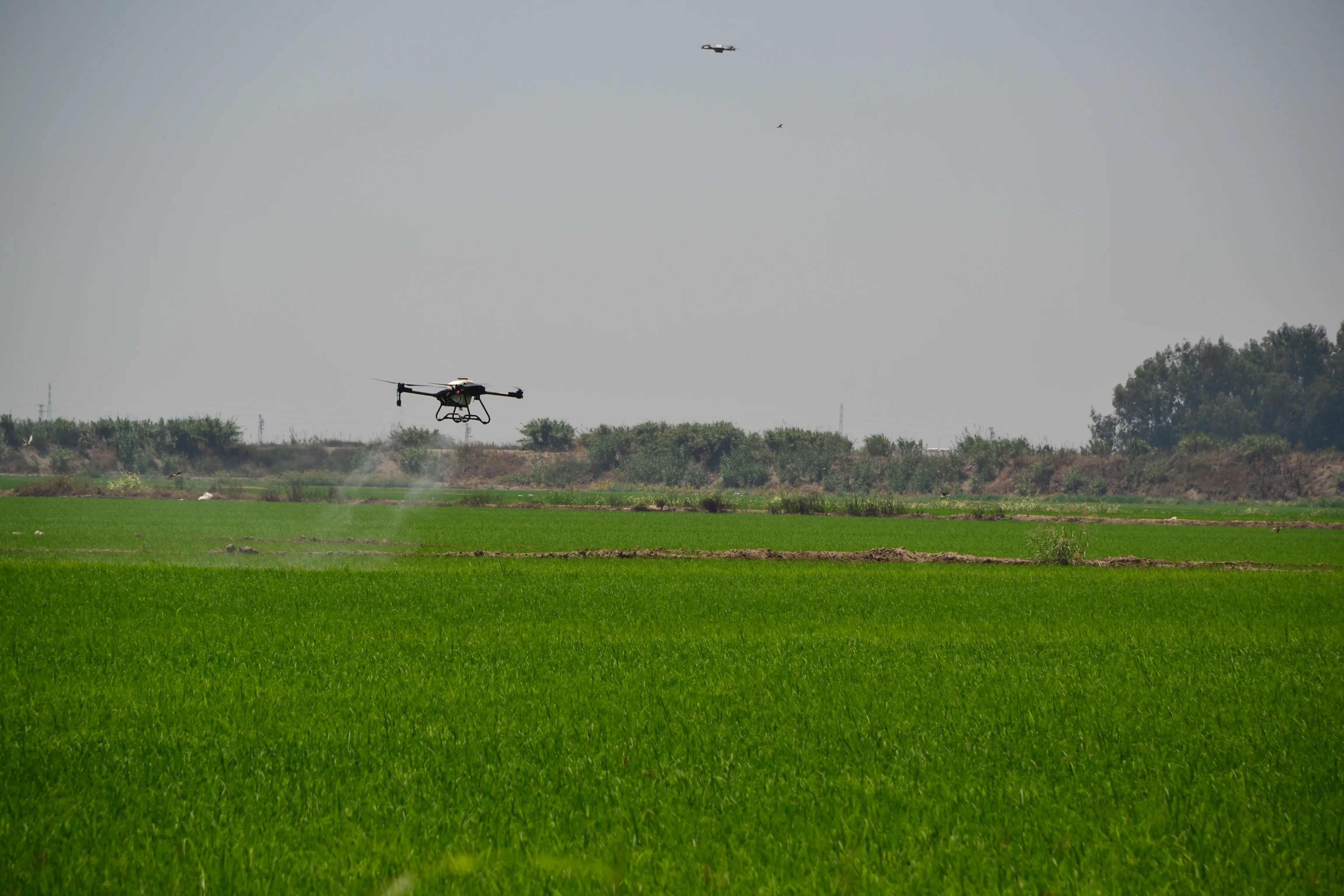
Drone Technology in Rice Farming: Efficient and Effective Applications
The use of drone technology in agriculture continues to expand, with rice cultivation being one of the key areas benefiting from its advantages. From sowing and fertilizing to pest control and weed management, many operations in rice farming can now be carried out more quickly, efficiently, and in an environmentally friendly manner using drone technology. baibars CT33s and CT50s models offer excellent solutions tailored to these needs. Here are the details:
Rice Seed Sowing
The amount of seed used in rice cultivation varies depending on the variety:
- Small-grain varieties: 15 kg per decare
- Medium-grain varieties: 17–18 kg per decare
- Large-grain varieties: 20 kg per decare
baibars CT50s Sowing Parameters:
- Drone Speed: 5 m/s
- Altitude: Adjusted based on seed weight, typically around 5 meters.
- Performance: With a single battery charge, the drone can perform approximately 5 flights, covering 10–15 decares in 10 minutes.
Rice Fertilization
Fertilizing rice fields is essential for improving soil fertility and directly enhancing crop quality.
baibars CT50s Fertilization Parameters:
- Drone Speed: 5 m/s
- Altitude: Adjusted based on fertilizer weight, typically around 5 meters.
- Performance: A single battery charge enables fertilization of 10–15 decares in 10 minutes.
Rice Blast Disease (Pyricularia oryzae Cav.)
This common disease in rice farming is controlled through chemical applications, including seed treatment and foliar spraying.
Spraying Recommendations:
- Seed Treatment: Should always be done as a preventive measure against the disease.
- Foliar Spraying: Should begin as soon as the first symptoms appear and be repeated if necessary.
baibars CT33s and CT50s Spraying Parameters:
- Flight Speed: 3–6 m/s
- Flight Altitude: 1–4 meters
- Safety: Maintain a minimum safety buffer of 4 meters to prevent drift.
Weed Control in Rice Fields
Common weed species in rice fields include:
- Barnyardgrass species (Echinochloa spp.)
- Nutgrass species (Cyperus spp.)
- Annual sprangletop (Diplachne fusca)
- Red rice (Oryza sativa var. sylvatica)
Chemical Control Recommendations:
- Application: Post-emergence herbicides should be applied dry or wet, depending on the formulation.
- Precautions:
- Use low altitude to prevent damage to plants in neighboring fields.
- Apply in wind-free weather conditions.
- Do not mix herbicides with other pesticides.
baibars CT33s and CT50s Parameters for Weed Control:
- Altitude:
- CT-33: 2.5–3 meters
- CT-50: 3.5–4 meters
- Working Width:
- CT-33: 6–7 meters
- CT-50: 7.5–8 meters
- Drone Speed: Average 5 m/s
Grasshopper Control
Chemical measures should be initiated at the right time to effectively control grasshopper infestations.
baibars CT33s and CT50s Parameters for Grasshopper Control:
- Altitude:
- CT33s: 4 meters
- CT50s: 5 meters
- Working Width:
- CT33s: 8 meters
- CT50s: 10 meters
- Drone Speed: Average 5 m/s
Conclusion
baibars CT33s and CT50s models are designed to meet all your needs in rice farming, from seed sowing to spraying, fertilization, and weed control. Offering environmentally friendly, fast, and effective solutions, we aim to enhance efficiency in rice cultivation.
